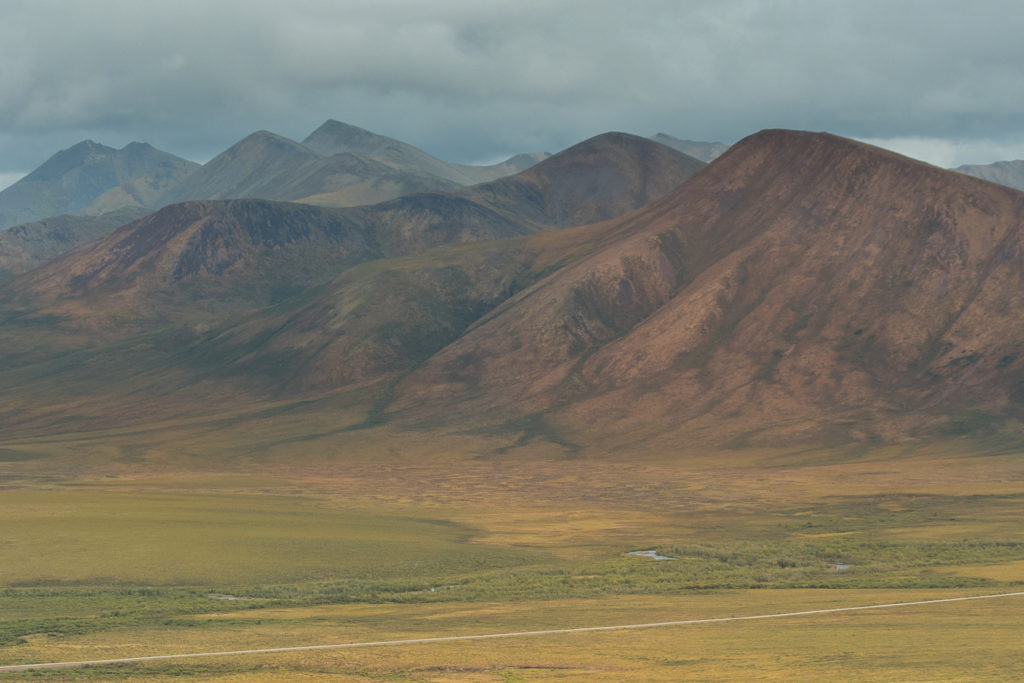
Mary points to the mountains and tells me her favorite thing about Montana is watching the snow line. We are driving to a biological research station, on a lake, where I will stay for some weeks, working on a book. Mary has been assigned as my travel guide. I have known her for one hour. Before the oversized large-stitch suede coat, and before the hand-knit orange hat, I noticed first her face, its cream-like span, a quality that until this year I had assumed was my own distinct perception of the beautiful features of beautiful people. Only now do I understand that it is youth, that I myself am not so young anymore, that these things appear to us only when they are no longer of ourselves.
I follow Mary’s finger from the valley to the mountain. I do not know what she means by “snow line.” I am looking for hard gradations, for some clear linear horizon, but all I can see is snow up high, and then a gentle taper to bare hillside below.
On the drive, Mary explains about larches, also called tamaracks. They are deciduous conifers whose plumage goes yellow in the fall, like maples. I did not know a coniferous tree could lose its needles. I understood these to be mutually exclusive categories.
When we get to the station, to my cabin, Mary tells me about bears, and moose, and big cats. She tells me, and then double checks her information, to be certain, about all the ways I might die in Montana. We discuss how to behave should I encounter a black bear vs. a grizzly. She describes each recommendation, detailing my best chances of survival. Key is a correct identification of the bear. You must be sure of your context to know whether you should run, or play dead.
After I am unpacked, and before she leaves for the drive back to town, Mary and I sit on a bench and look at the lake. She tells me about her mother, who has been in and out of the hospital. She tells me about how it was her mother who first showed her the woods, how they hiked together, how there has not been so much hiking this year, how that is hard. I think then that perhaps Mary shares things too soon, that we are the same in this way, that what usually isolates us makes her, for me, a kindred. I sit quietly. I let her talk.
I want to tell her that I have never written a book before. That even though I am older, and titles appear after my name, I am faking it. That everyone is faking it. That I may not understand what is happening to her exactly, but that I do know what it is to live life as an island, the desperate want of a bridge.
Later, after Mary has gone, after she tells me to take a picture of the snow line when it comes, I will think of her. Out in the field with biologists, on boats and holding cork lines and organizing plastic coolers full of samples, she appears, a companion in the vulnerability I otherwise keep secret. I will be thinking about algae, about how it is neither an animal nor a plant, how it photosynthesizes but lacks the vascular structure of xylem, and then I will be thinking about Mary, about her mother, about how every broad classification we use to render the day-to-day world navigable is, on some level, incorrect; how we accept these classifications anyway, what shocking discomfort it is when they dependably fail. The body that made Mary’s body, that first impressed upon her the godlike character of a mother, that guided her through seasons of larches, grizzlies, snow: that body is failing too.
It does snow, finally. As promised, I send Mary a picture, step outside the cabin and watch as my breath softens the edges of everything in the frame. It is not until I do this that I understand a line is not a line, that snow is a moveable state, gradual by my context but not at all by the context of a mountain. It will take days, but I will learn to watch the slope, to see, as if by magic, the state change between the dappled icing white and the melted stretch of impossible orange trees. As it turns out, I was looking at it the whole time.
__
Kailyn McCord writes fiction and nonfiction in Oakland, California, her hometown by way of Oregon, Alaska, and New Orleans. Her work has been shortlisted at Glimmer Train, and has appeared or is forthcoming in Ploughshares, The Believer, and The Rumpus, among others. Kailyn is currently finishing a nonfiction manuscript about fire in California, and at work on collection of linked stories about the myriad nature of disaster. You can find her on twitter, sometimes. When not writing, she likes a good camping trip, replete with no reception.

2 comments
Jan Priddy says:
May 5, 2020
You make me catch my breath and not only because “even though I am older, and titles appear after my name, I am faking it.” And I am, but because your words are tender and beautiful.
Makaylie Lucas says:
Jun 14, 2020
This is a beautiful piece. I feel that we all tend to overshare. People appear to share their problems with strangers more than friends and family. Those we know will usually have a biased opinion on our problems. Strangers know nothing about us or our lives except for what we tell them. They can give great advice; and as the oversharers, we will probably never see these strangers again.